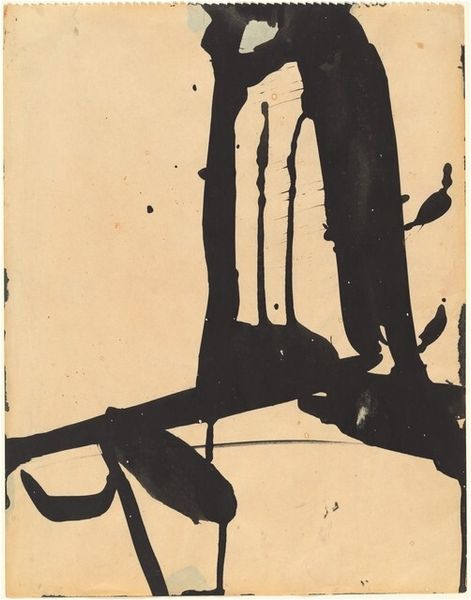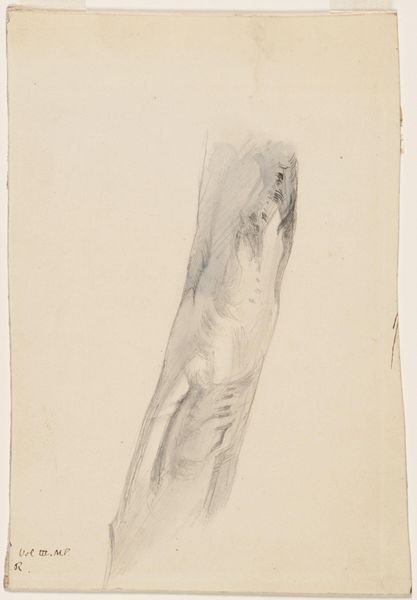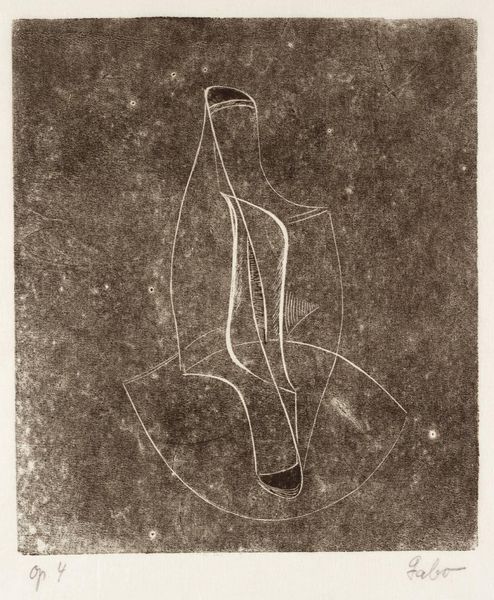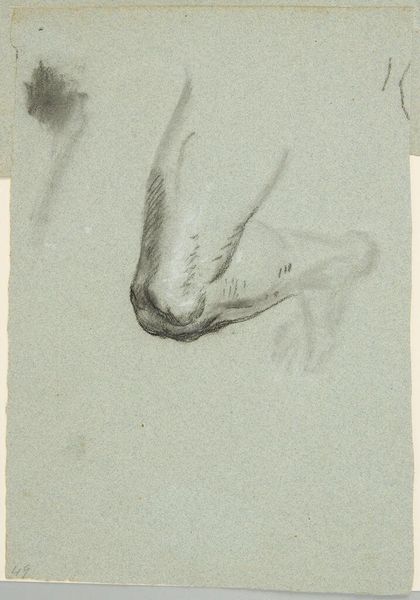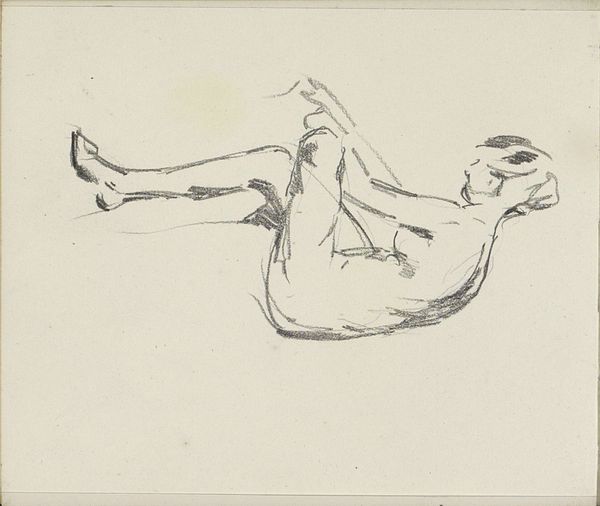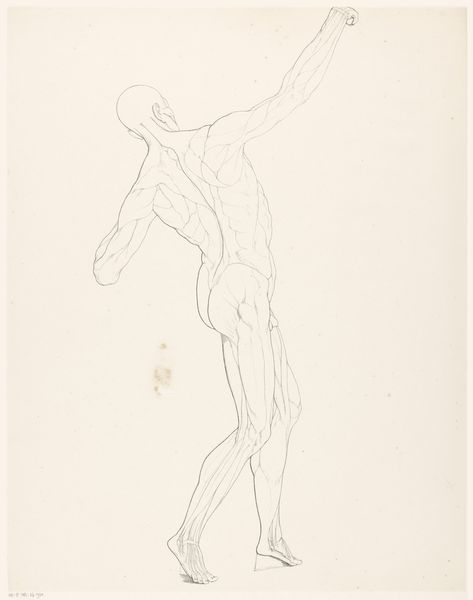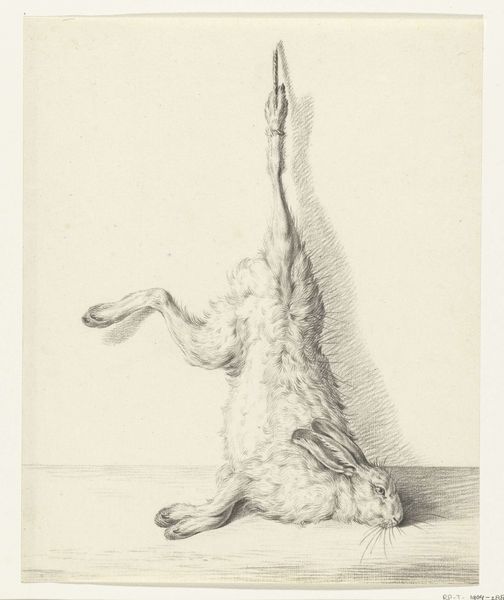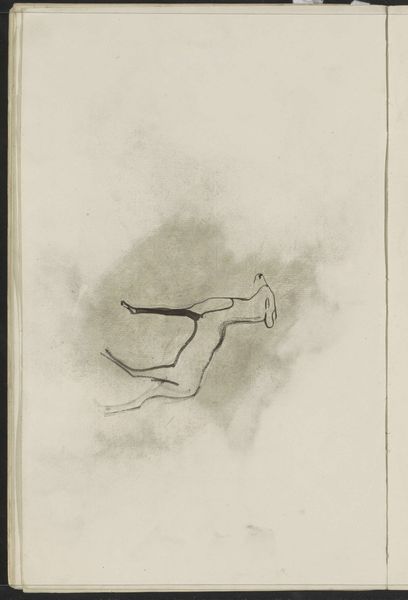
drawing, print, etching, paper, ink
#
drawing
# print
#
etching
#
figuration
#
paper
#
ink
#
abstraction
#
monochrome
Dimensions: plate: 11.8 x 7.1 cm (4 5/8 x 2 13/16 in.) sheet: 16.8 x 10.2 cm (6 5/8 x 4 in.)
Copyright: National Gallery of Art: CC0 1.0
Curator: Looking at this 1946 etching and ink on paper, titled "Různé Piecy" by Václav Zykmund, I'm immediately struck by the high contrast between the dark, almost cosmic background, and the lone white figure dominating the scene. It is giving me pause. Editor: Pause, how so? The composition, to me, feels rather stark and unsettling. The figure, awkwardly bent, lacks context. The texture achieved through the etching process is quite pronounced, isn't it? Notice how the background has this rough granular quality, versus the smooth texture used in rendering the abstracted subject? Curator: Indeed, there's a distinct discordance. The figure appears almost trapped or suspended in this undefined space. But I think that tension is entirely intentional. Zykmund, having experienced the Nazi occupation of Czechoslovakia during the war, and then the subsequent Communist takeover in 1948, lived during intensely uncertain and violent times. A figure like this could be representing isolation, resistance or maybe a kind of fractured selfhood. Editor: I appreciate that interpretation. If we’re to deconstruct it formally, the monochromatic palette emphasizes a somber mood and, that central figure-- is it a dancer or a contortionist perhaps-- dominates through its size, but its isolation and fragmentation, rendered through simplified form, lends to its weakness, as though we were peering into something, and glimpsing at it for a brief instant. Curator: Precisely, that impression, is further supported by the visual language deployed by the artist, Zykmund, a known member of the surrealist movement, often employed stark contrasts to jar the viewer into contemplating societal realities, often revealing underlying truths that were socially forbidden during his lifetime. Editor: Yes, and I note also the contrast of texture within the very surface of the work itself. The granular effect of the dark ground compared to the flat tone of the figure establishes an appealing tension that enlivens it. Curator: Ultimately, this image carries the heavy weight of a generation grappling with loss, societal trauma and ideological disillusionment. We’re left questioning its implications about freedom, identity and the search for meaning in a chaotic era. Editor: Agreed, this artwork rewards deep-diving to explore the visual relationships that can both elicit and even sustain our consideration.
Comments
No comments
Be the first to comment and join the conversation on the ultimate creative platform.

